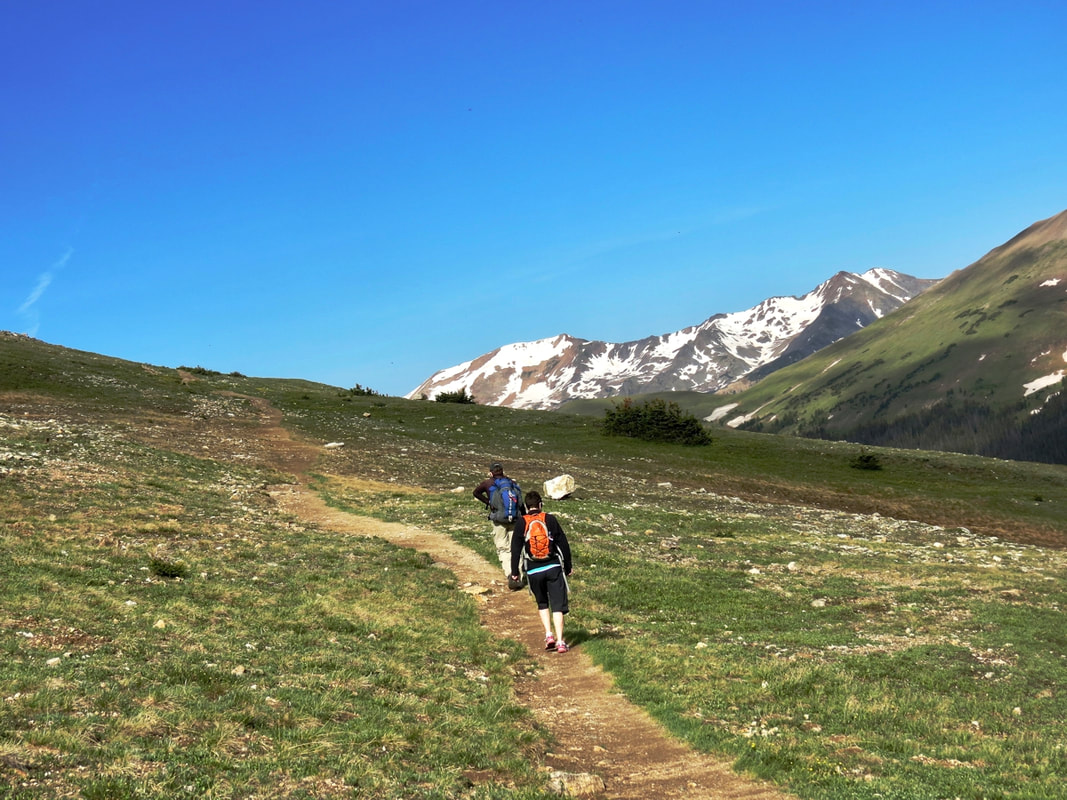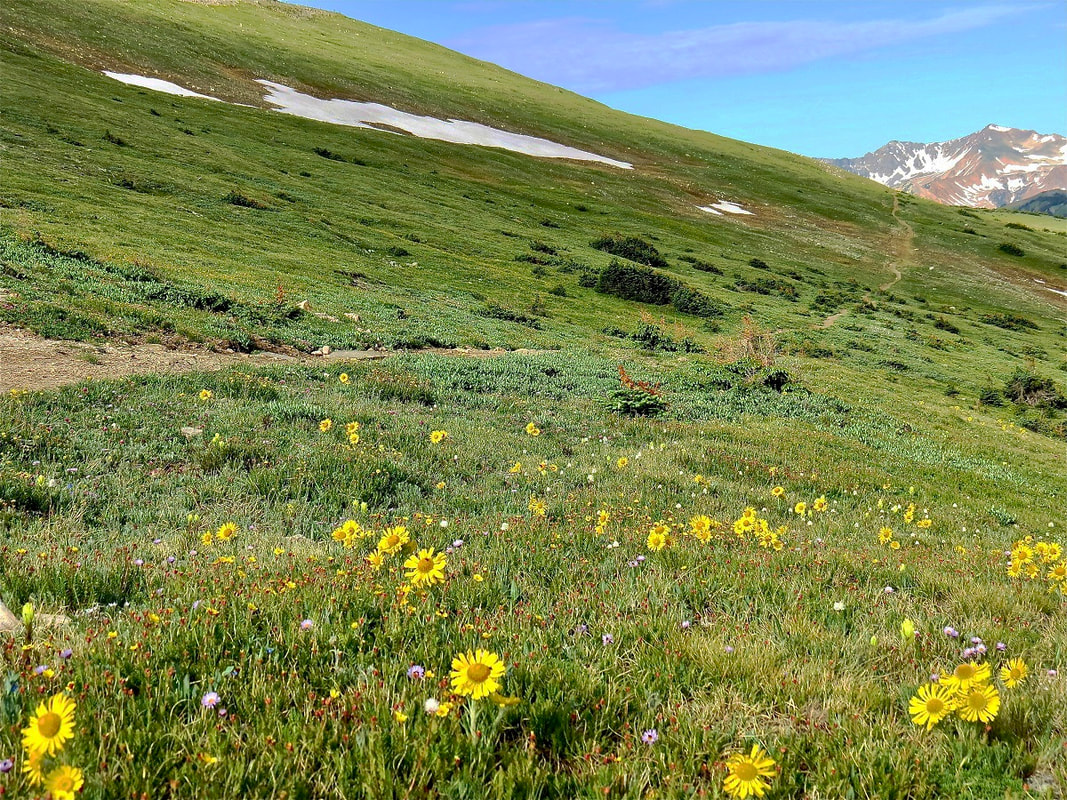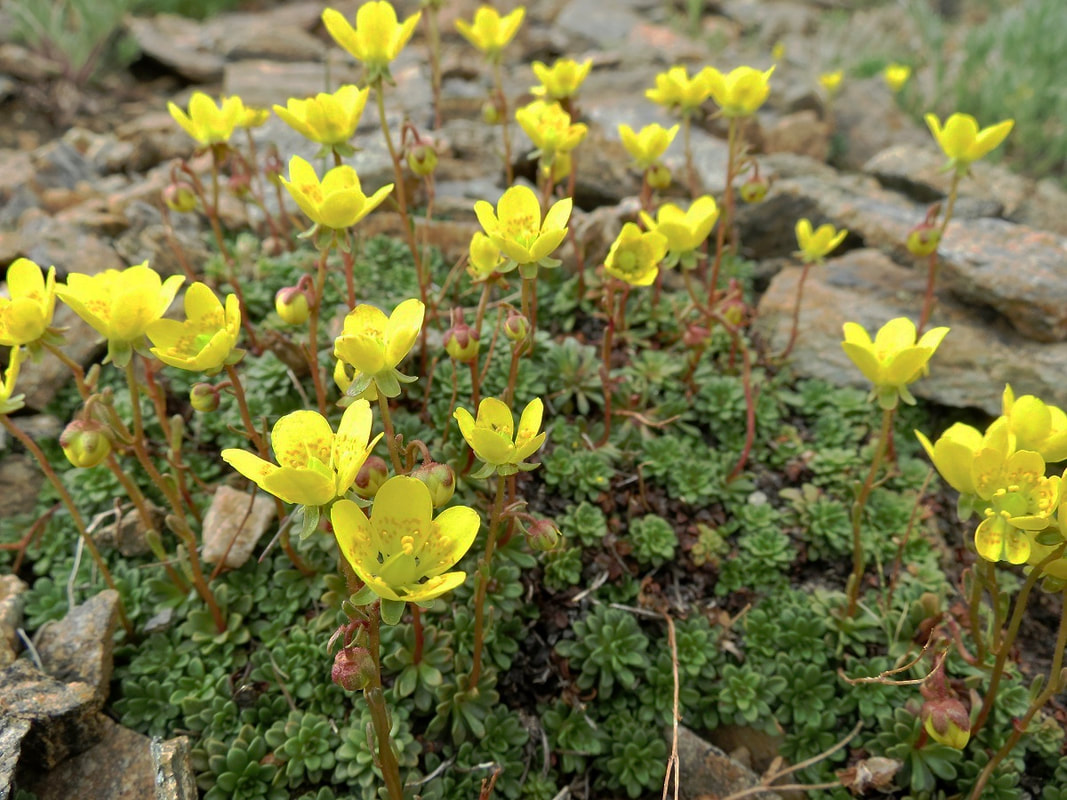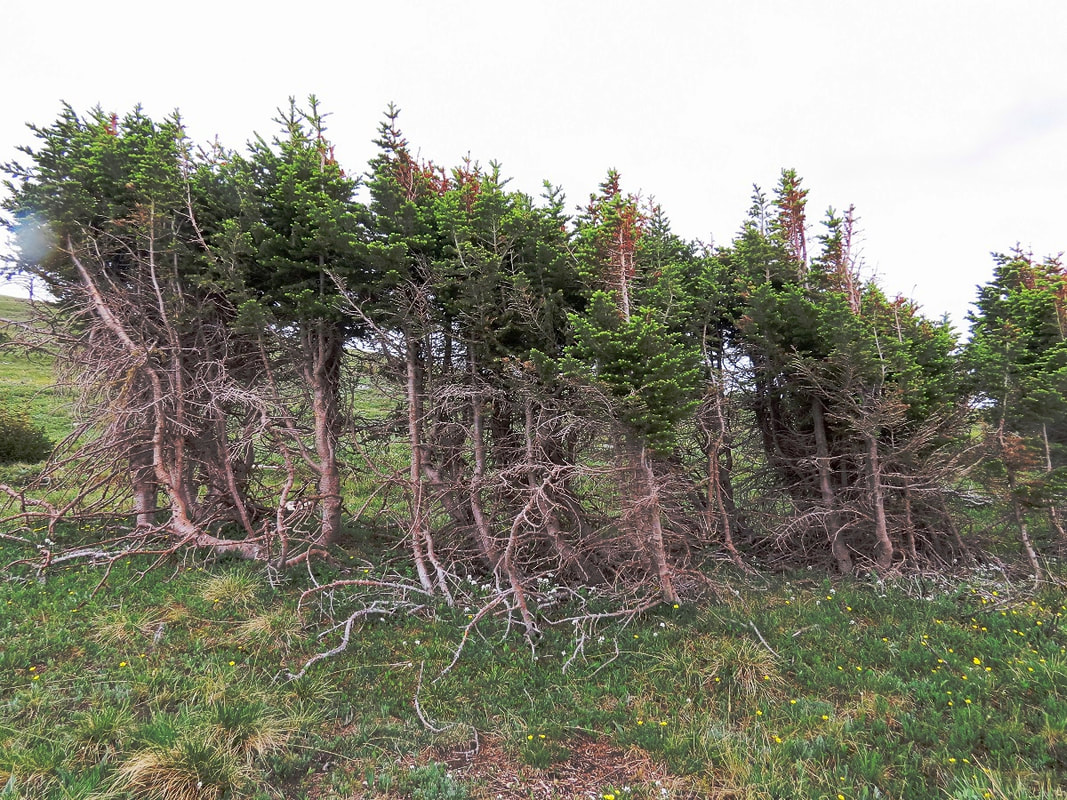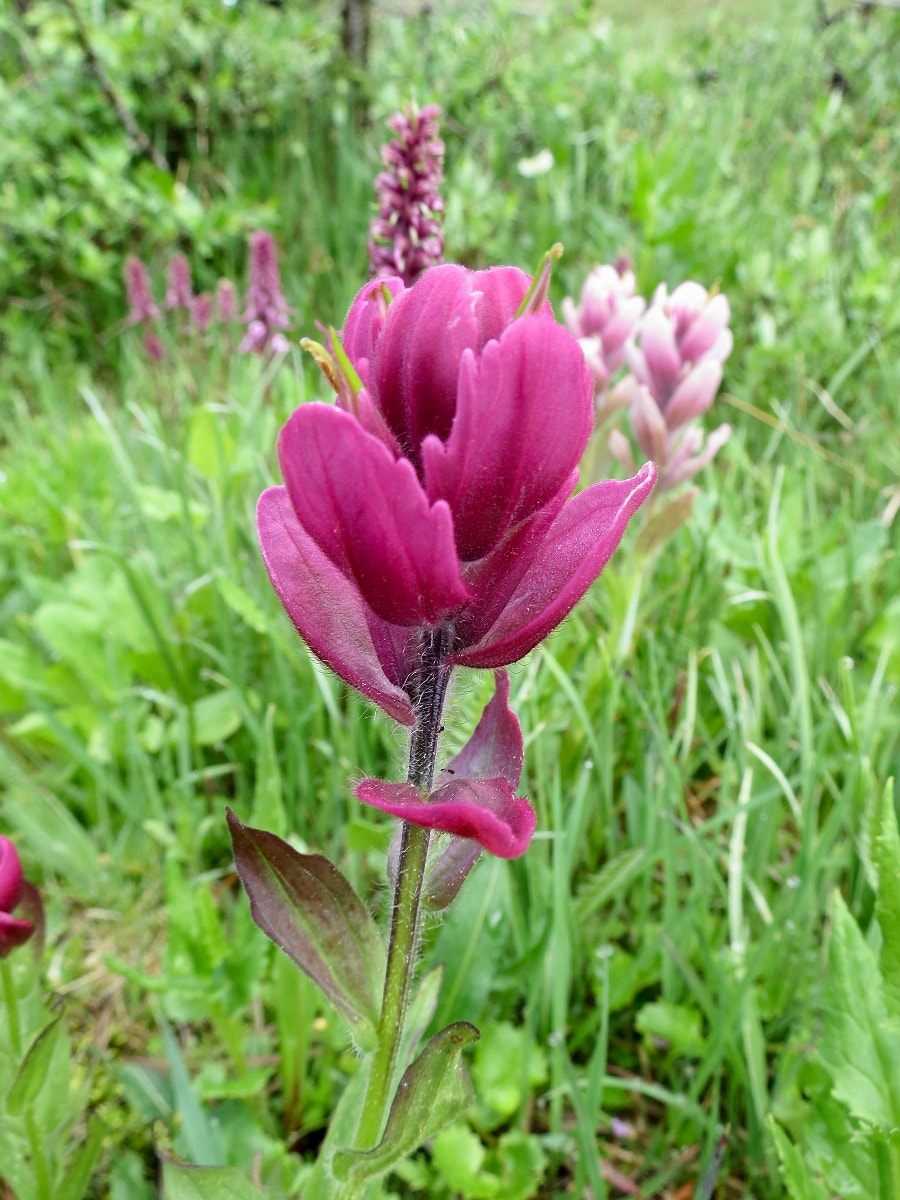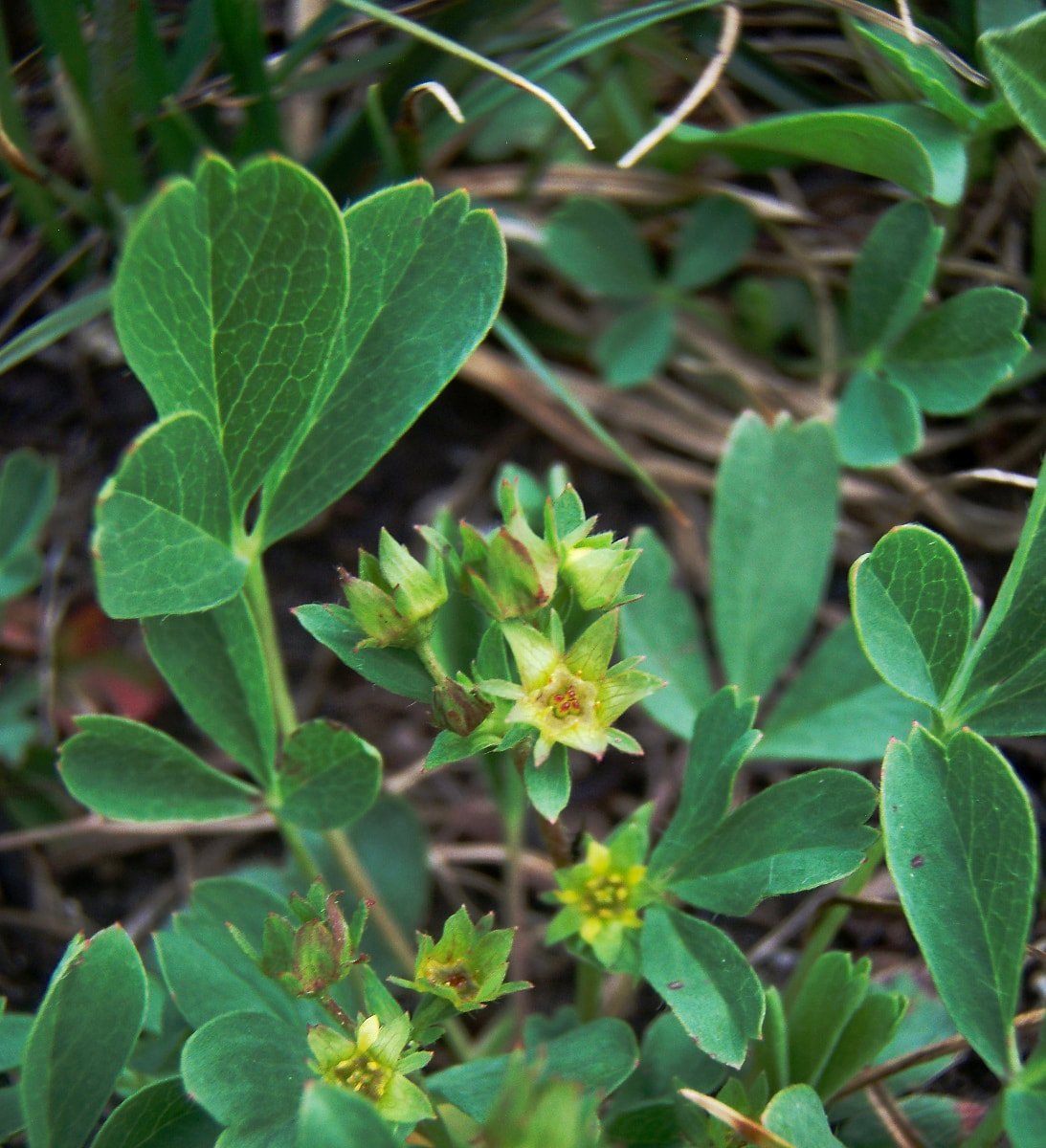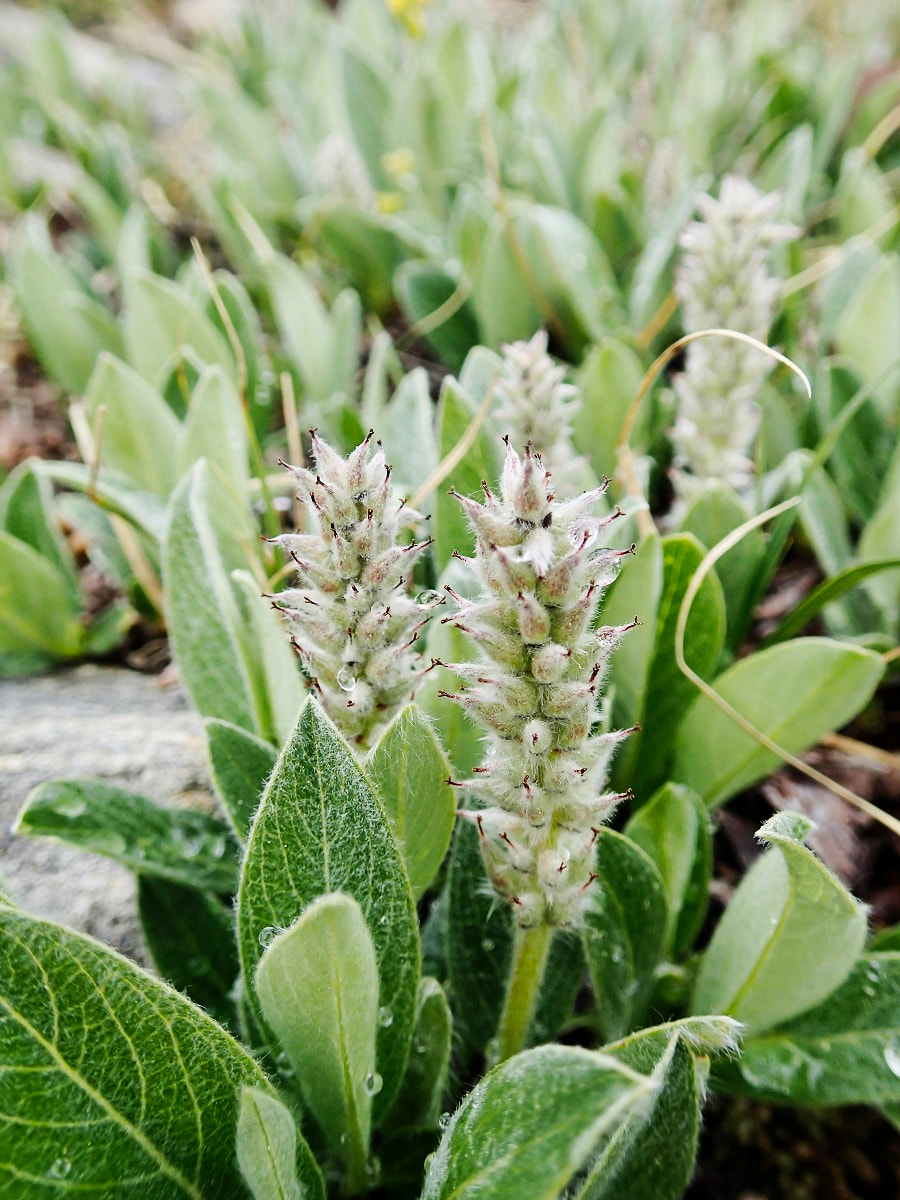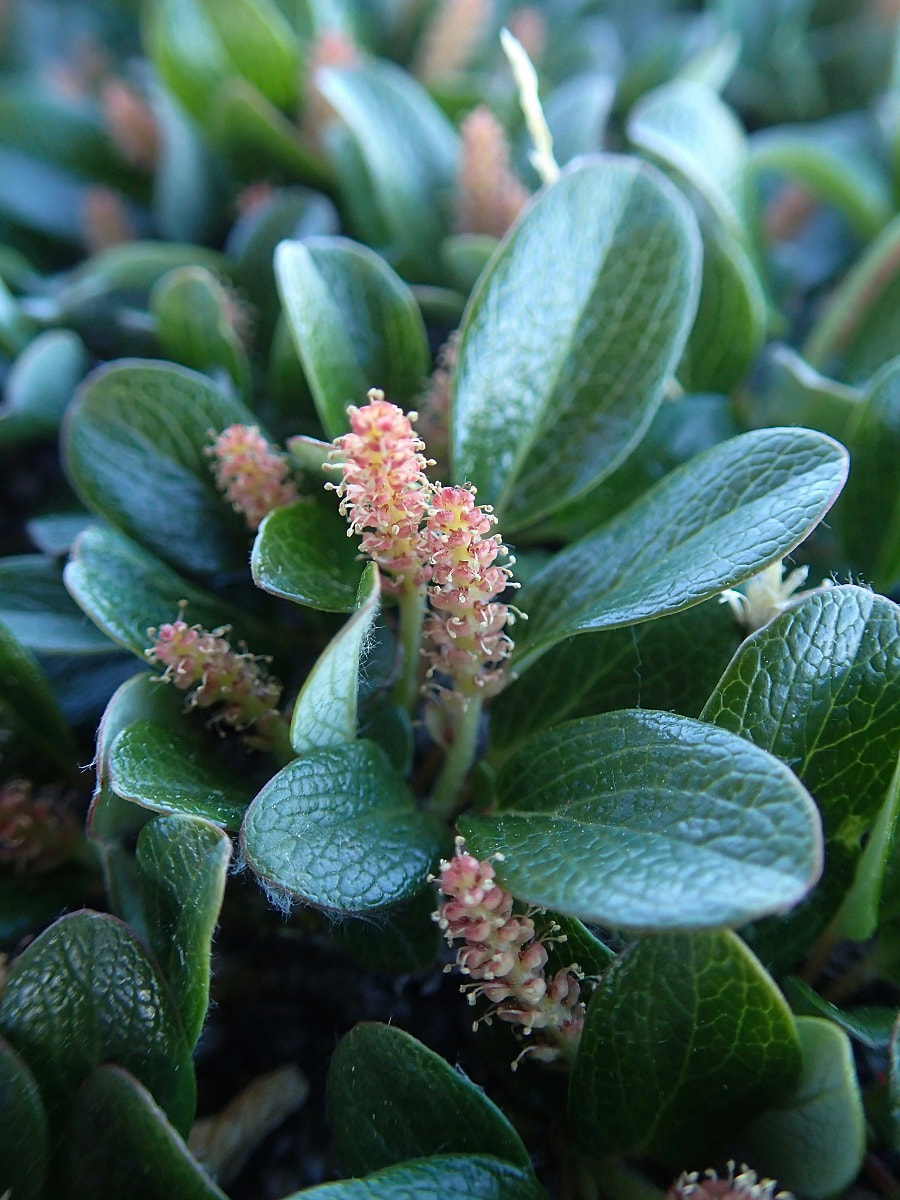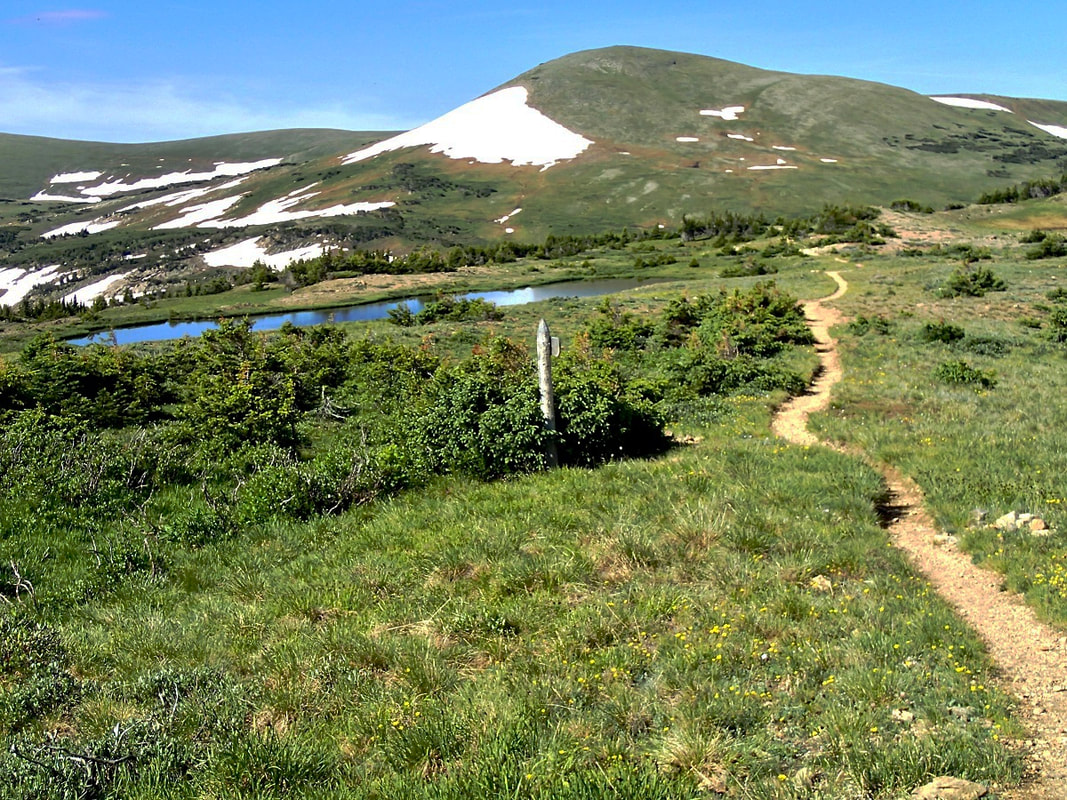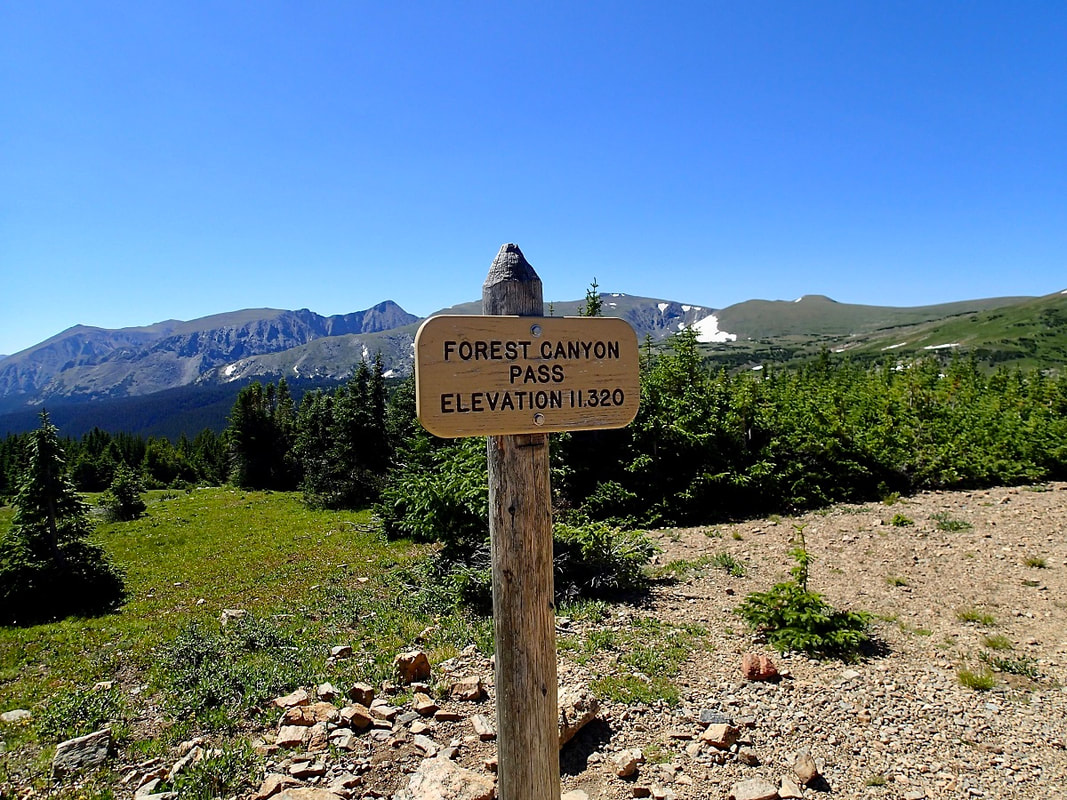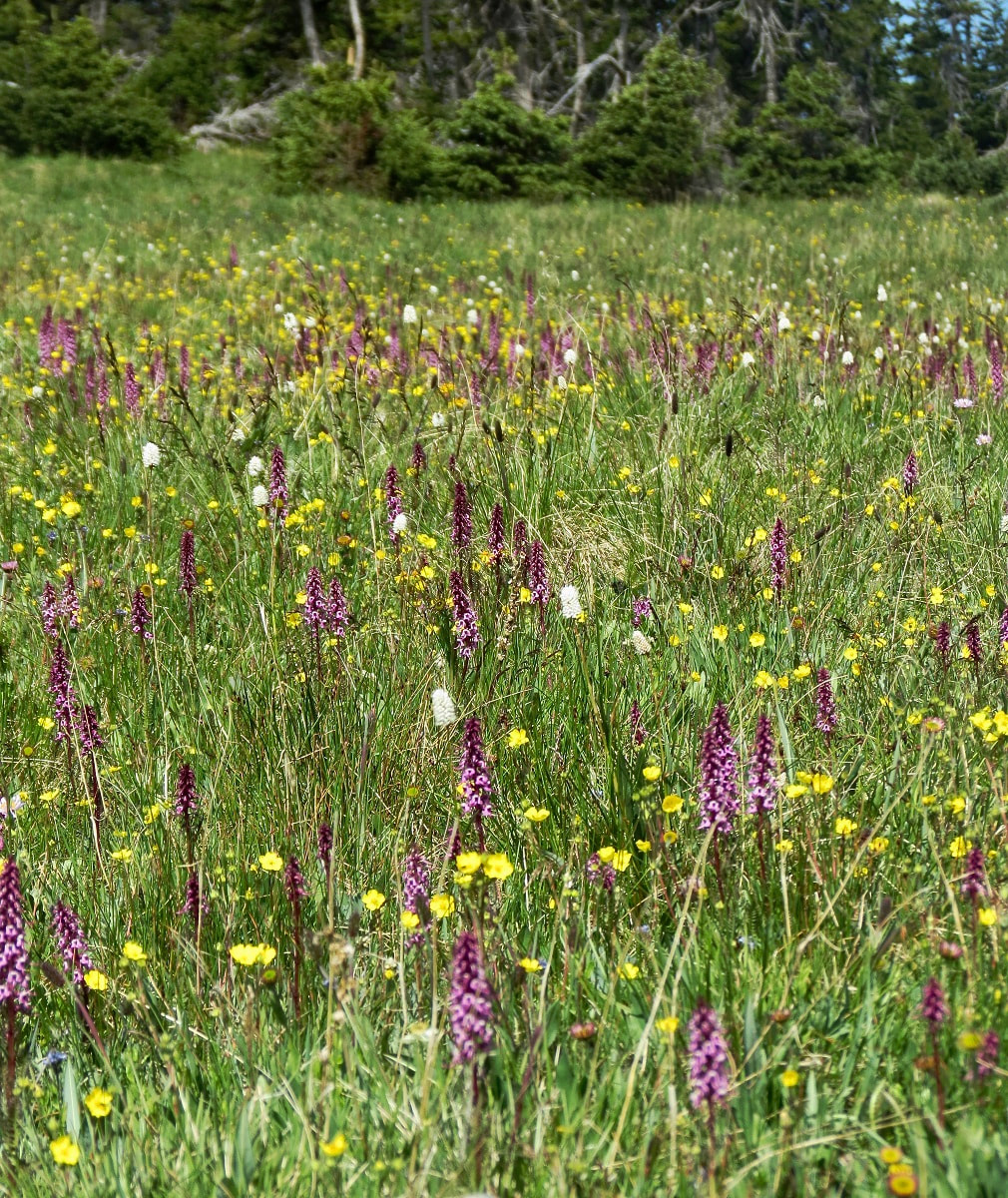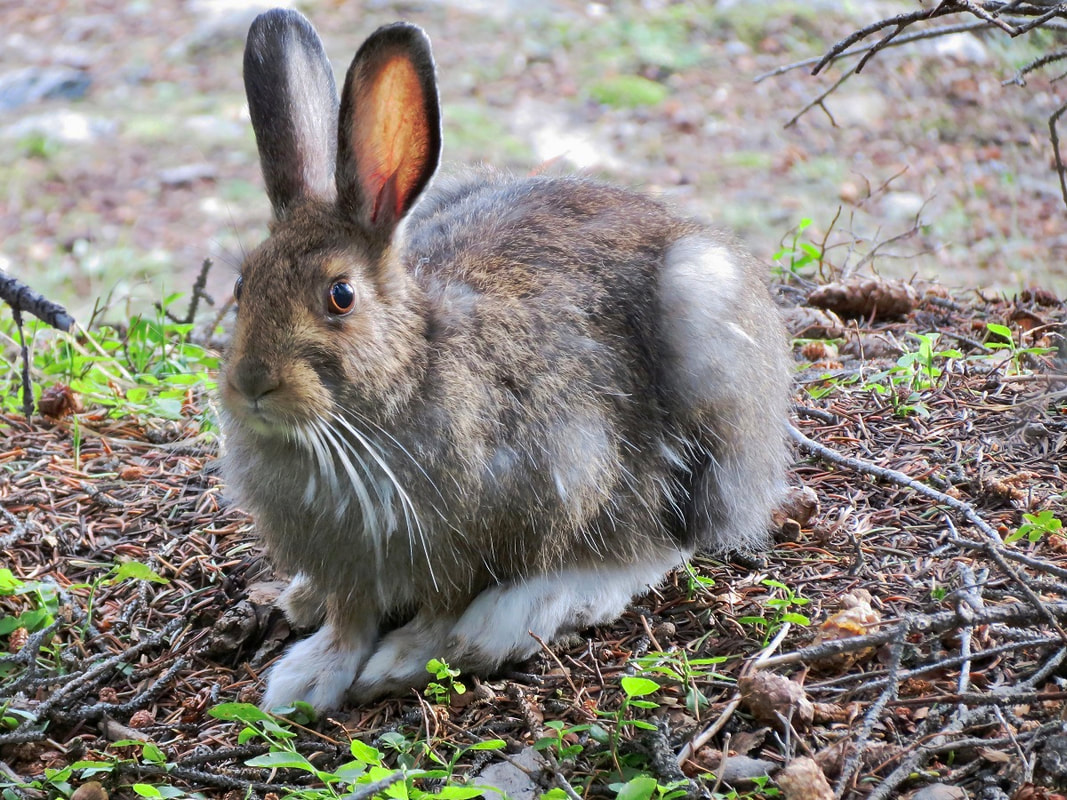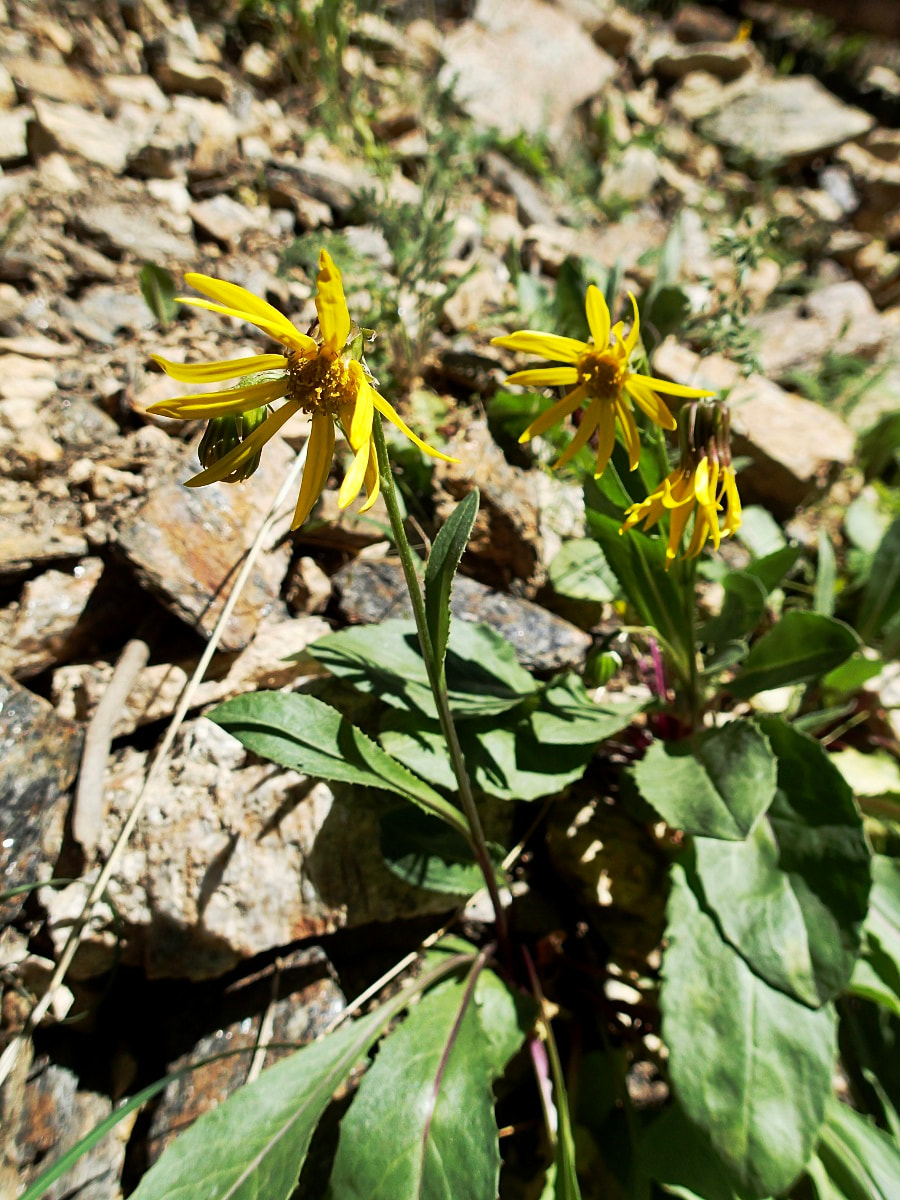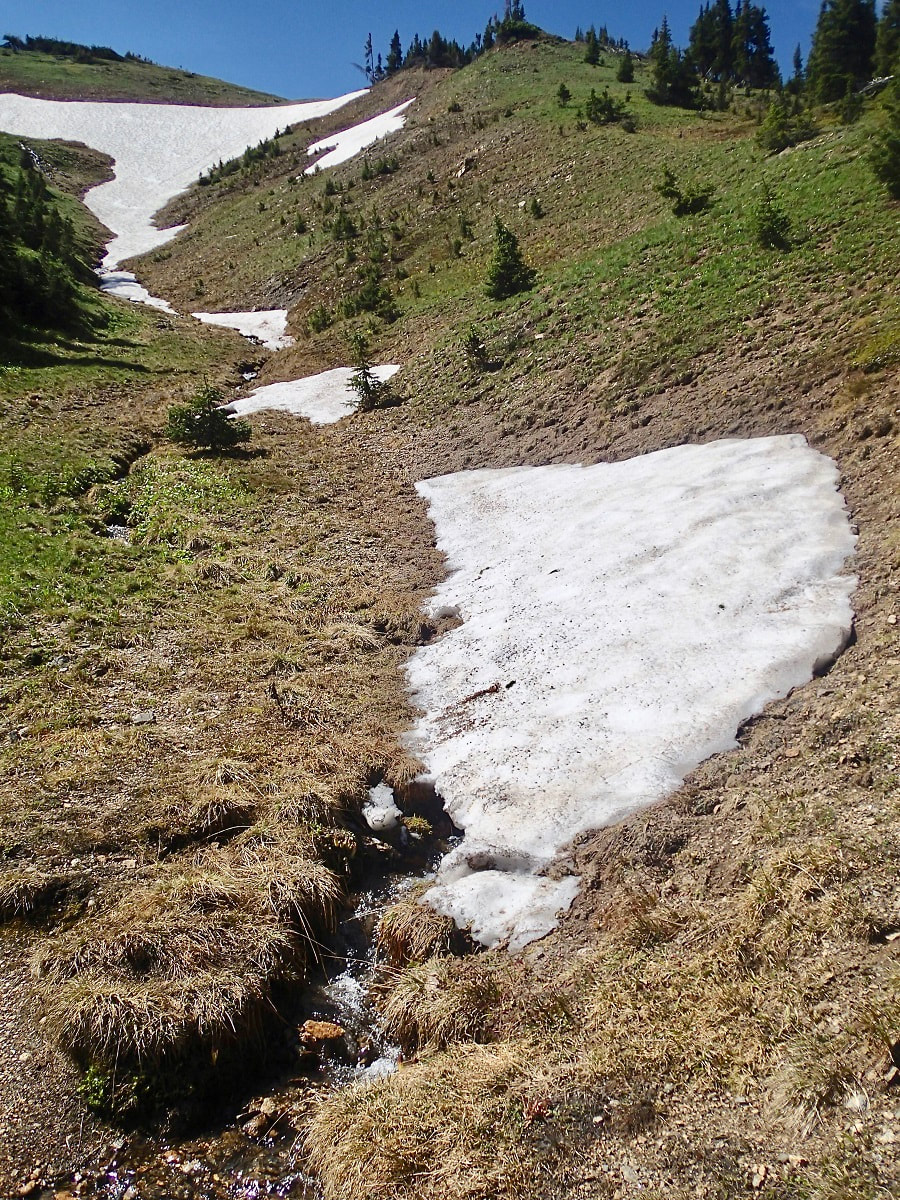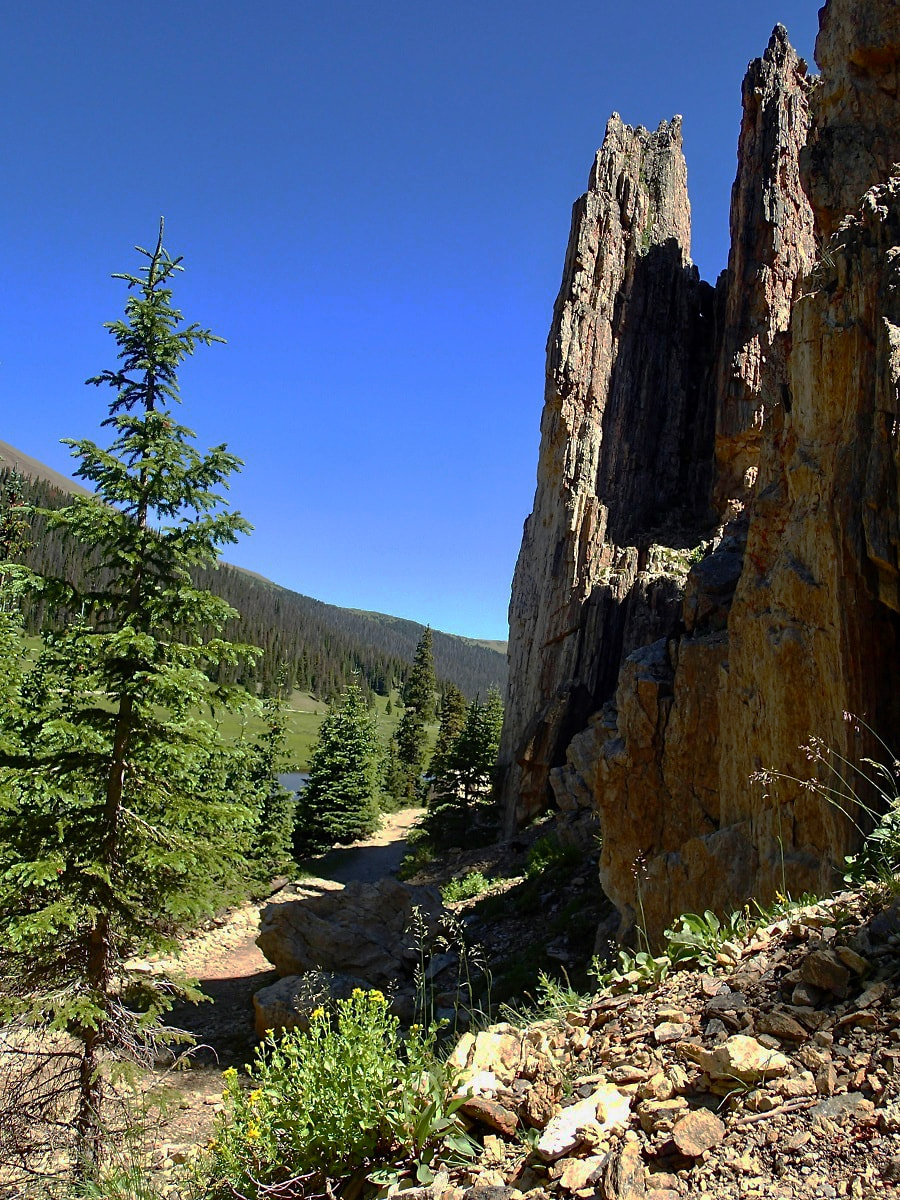|
Story and photos by Marlene Borneman Editor's note: this piece is included in the article, "Three of the Best Wildflower Hikes in Rocky," by Marlene Borneman, published in the June/July edition of Hike ROCKY magazine. WEST UTE TRAIL Mileage: 9 miles round-trip (one way 4.5 miles) Elevation gain: 1,038 elevation loss one-way; 1,038 elevation gain round trip Rating: Easy one-way and Moderate round-trip Life Zones: Alpine/subalpine Peak Bloom: July-August The hike begins across from the Alpine Visitor Center (AVC) at 11,796 feet and ends at Milner Pass 10,758 feet smack on the Continental Divide! It is an approximate 23-mile drive from the Beaver Meadows entrance station to the Alpine Visitor Center. From the Grand Lake park entrance, go north on US 34 for 20.2 miles to the AVC. Milner Pass is 4.3 miles west from the AVC on Trail Ridge Road. There are restrooms at the AVC and at Milner Pass. A pleasant way to do this excursion is with a car shuttle making this a one-way trip. This avoids uphill gains and retracing steps. Place a car(s) at the Milner Pass Trailhead. One car brings the driver(s) back up to the AVC to begin the hike. This is one of my choice hikes to view a variety of exquisite alpine and subalpine wildflowers. In addition to wildflowers, marmots, pikas, snowshoe hares, and elk are often seen. Another bonus is spectacular views of the Never Summer Range. I never tire of this hike. 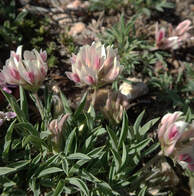 Alpine clover Alpine clover Start hiking by crossing Trail Ridge Road at the AVC parking lot to the obvious trail southwest. The trail crosses the expansive alpine tundra taking in alpine clover, dwarf clover, Parry's clover, blackhead daisy, alpine sunflower, American bistort, mountain dryad, spotted saxifrage, alpine stitchwort, alpine parsley and loads more. In July, the petite elegant snowlover can be abundant and a treasure to find. Cushion plants, champions of the tundra, are at home here boasting their fortitude against the elements. Moss campion, alpine forget-me-not, and alpine phlox are a few of these sturdy plants to be seen on this trail. 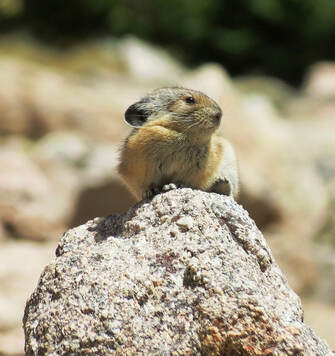 Pika Pika There is a short uphill section within the first mile reaching a rocky depression on the left (east) side of the trail. These large rocks shelter pikas and marmots. The pika's favorite food, alpine avens, is plentiful on the tundra. Pikas do not hibernate so they must gather food all summer to store in their hay piles to sustain them in the winter. Just beyond this spot the uncommon gold bloom saxifrage forms a bright gold carpet. I enjoy taking time with these flowers, getting down low with my hand lens to see the tiny golden spots on each petal. Arctic gentians add to the mix anywhere from mid- august through October. Many species of paintbrush flaunt the tundra with various shades of red, magenta and pale yellow. An often overlooked plant on the tundra is sibbaldia. The common name is cloverleaf rose. Sibbaldia has tiny yellow flowers and leaflets that resemble a three-leaf clover. Also often passed by are two ground hugging willows, the alpine willow and snow willow. They often grow side by side. One way to tell them apart is by their leaves. The alpine willow has broad bright green leaves with pointed tips and a deep mid-vein, whereas the snow willow leaves are rounded on the tips with a prominent netted vein pattern. The tiny flowers (catkins) lie within the leaves. Farther on to the east, three pristine tarns create peaceful spots for burnt-orange false dandelion, pinnateleaf daisy, dwarf goldenrod, subalpine daisy, dwarf chiming bell, Whipple's penstemon, starwort, mountain laurel, rose crown and king's crown. In August, start looking for several species of gentians in this area. Arctic gentians add to the mix anywhere from mid- august through October. Many species of paintbrush flaunt the tundra with various shades of red, magenta and pale yellow. After hiking approximately 2.3 miles you come to Forest Canyon Overlook. This marks approximately a halfway mark for the hike. In this area you may see Parry's lousewort, pale agoseris and Coulter's daisy. Heading down, the trail often becomes muddy from melting snow. Striking pink elephanthead fills the moist meadows. Before mid-July you may even find snow along this part of the trail. As the trail levels out, remaining muddy from the snow melting above and the many rivulets of water coming down the steep slopes above, watch for gray angelica, brook saxifrage, alpine speedwell, Hornemann's willowherb, marsh marigold, and globeflower that enjoy this damp habitat to the fullest. A strange appearance in wet areas is the bishops cap. Another find here in late July-August is the fringed grass-of-Parnassus. If you are there at the right time, waves of brilliant yellow come into view with the arrowleaf ragwort. There are a few stream-crossings to negotiate along here, too. As the trail drops farther into subalpine forest, look closely for the tiny plants in the Heath family; one- sided wintergreen, pyrolas, and wood nymphs sheltering under foliage. After 3.8 miles at the signed Mount Ida Trail junction, swing right for approximately 1.0 mile down to Milner Pass. Along the switchbacks, robust masses of heartleaf bittercress show off brilliant white petals. Jacob's ladder, hooked mountain violet, spotted coral root orchid and the more elusive wood nymph grace the forest floor. At this juncture, columbines, bracted alumroot, strawberry blight, and alpine sorrel can also be seen among the crevices. In August, blacktip senecio will be seen in abundance along the stretch of trail following the Poudre Lake shore all the way to the trail head. Take time to look under the flower head and see the black tips on the phyllaries. Purple fringe and paintbrushes are also in the assortment of flowers along Poudre Lake shores down to Milner Pass. 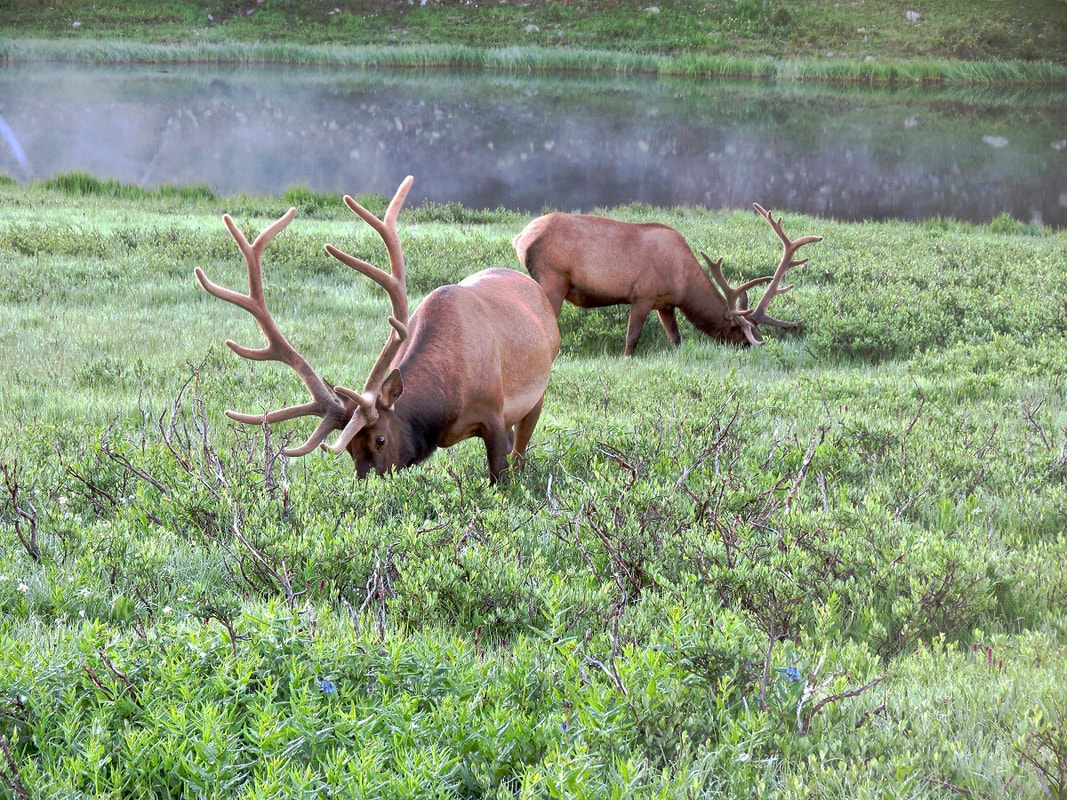 Massive bull elk near Poudre Lake (near Milner Pass). Massive bull elk near Poudre Lake (near Milner Pass).  Marlene has been photographing Colorado's wildflowers while on her hiking and climbing adventures since 1979. Marlene has climbed Colorado's 54 14ers and the 126 USGS named peaks in Rocky. She is the author of Rocky Mountain Wildflowers 2nd Edition, The Best Front Range Wildflower Hikes , and Rocky Mountain Alpine Flowers. The publication of this article was made possible by Rock Creek Pizza of Allenspark and Castle Mountain Lodge of Estes Park, supporting local and independent journalism.
0 Comments
Leave a Reply. |
Categories
All
|
© Copyright 2025 Barefoot Publications, All Rights Reserved

